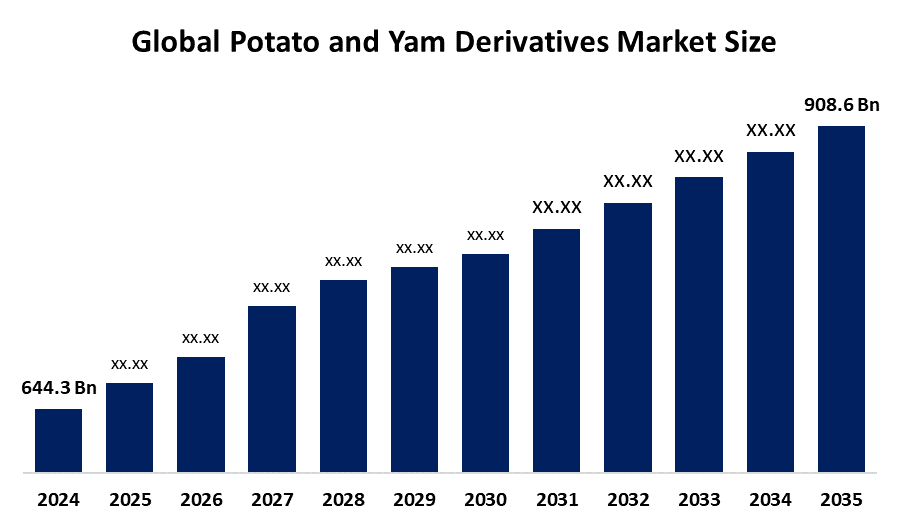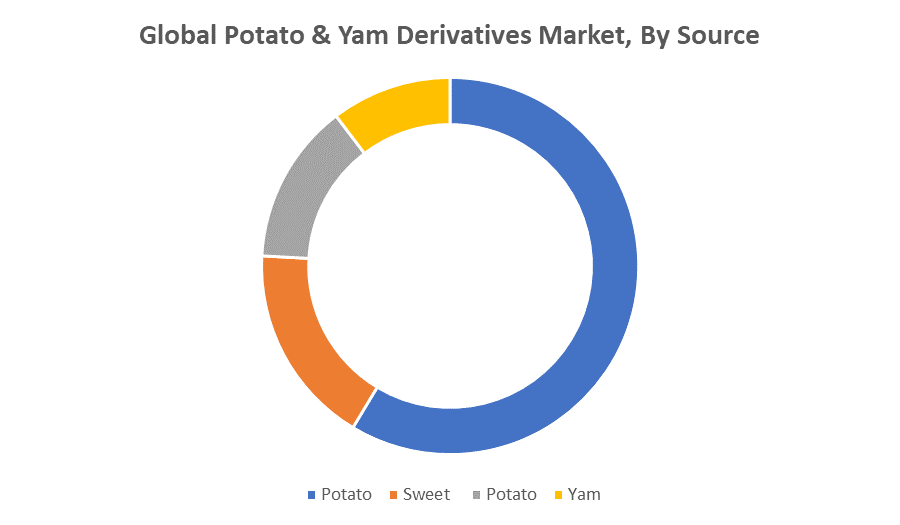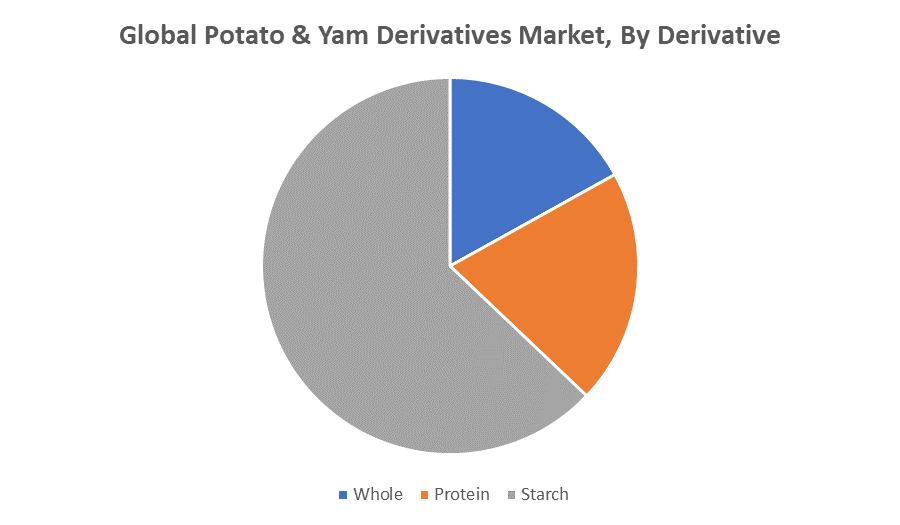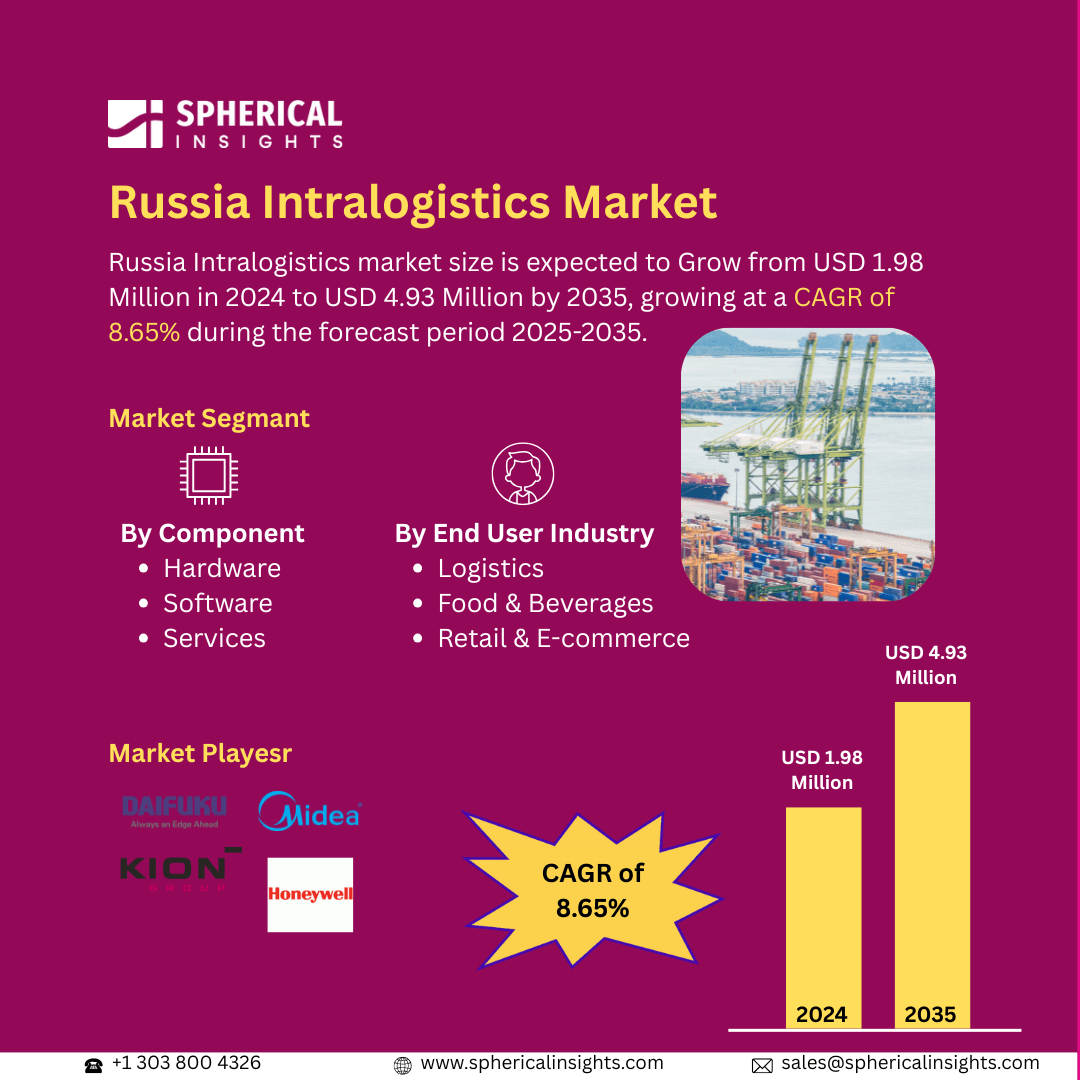Global Potato & Yam Derivatives Market Insights Forecasts to 2035
- The Global Potato and Yam Derivatives Market Size Was Estimated at USD 644.3 Billion in 2024
- The Market Size is Expected to Grow at a CAGR of around 3.17% from 2025 To 2035
- The Worldwide Potato & Yam Derivatives Market Size is Expected to Reach USD 908.6 Billion by 2035
- Asia Pacific is expected To Grow the fastest during the forecast period.

Potato & Yam Derivatives Market
The global potato & yam derivatives market involves products made from potatoes and yams, including starches, flours, flakes, and other processed forms. These derivatives are widely used in the food industry as ingredients in snacks, baked goods, soups, and sauces, providing texture and nutritional value. Beyond food, they find applications in pharmaceuticals, cosmetics, and industrial products. Potato and yam derivatives are valued for their versatility, natural origin, and gluten-free properties, making them popular in health-conscious diets. The market includes a variety of forms such as dehydrated flakes, granules, and starch powders, catering to diverse consumer needs. With advancements in processing techniques, these derivatives retain nutritional benefits while offering convenience. The increasing incorporation of these derivatives in processed foods and non-food products highlights their multifunctional role. Overall, the market reflects a growing preference for natural, plant-based ingredients, positioning potato and yam derivatives as important components in modern food and industrial applications.
Attractive Opportunities in the Potato & Yam Derivatives Market
- Creating organic, fortified, and specialty potato and yam derivatives can attract health-conscious consumers seeking natural and functional ingredients. This includes launching plant-based alternatives and enhanced nutritional formulations.
- Rising potato and yam consumption in developing regions presents strong potential for market growth. Increasing urbanization, disposable incomes, and changing dietary preferences in countries like India, China, and other Asia-Pacific nations support higher adoption rates.
- Potato and yam derivatives offer opportunities in non-food sectors such as biodegradable packaging, biofuels, pharmaceuticals, and cosmetics. Leveraging these applications can open new revenue streams and appeal to eco-friendly and sustainable product trends.
Global Potato & Yam Derivatives Market Dynamics
DRIVER: Growing because more people want natural and gluten-free food options
The global potato & yam derivatives market is growing because more people want natural and gluten-free food options. Potato and yam products are good alternatives for those who avoid gluten and want healthy ingredients. These derivatives are used in many foods like snacks, baked items, and soups, making them popular with food makers. New technology has made it easier to process these products while keeping their quality and nutrition. Besides food, potato and yam derivatives are also used in medicines, cosmetics, and animal feed, which helps the market grow even more. With more people living in cities and looking for easy-to-make food, the demand for these products keeps increasing. All these reasons together help the market grow steadily worldwide.
RESTRAINT: Fluctuation in the supply and prices of raw potatoes and yams
One major issue is the fluctuation in the supply and prices of raw potatoes and yams, which can affect production costs and product availability. Additionally, the quality of raw materials may vary due to factors like weather conditions and farming practices, leading to inconsistencies in the final products. Limited awareness and preference for alternative ingredients in some regions also restrict market expansion. Moreover, the processing of potato and yam derivatives requires specialized equipment and technology, which can be costly for manufacturers, especially small and medium-sized enterprises. Environmental concerns related to large-scale farming and processing, such as water use and waste generation, may also impact production practices. Lastly, competition from other starch and flour sources like corn, wheat, and cassava can limit market growth, as these alternatives are often cheaper or more readily available in certain markets. These factors together slow down the overall market progress.
OPPORTUNITY: Development of new and innovative products
One key opportunity lies in the development of new and innovative products, such as organic and fortified derivatives, which can attract health-conscious consumers. Expansion into emerging markets where potato and yam consumption is rising offers potential for increased adoption. There is also growing interest in using these derivatives in non-food sectors like biodegradable packaging, biofuels, and pharmaceuticals, opening new revenue streams. Advances in sustainable farming and processing techniques present opportunities to reduce environmental impact and appeal to eco-friendly brands and consumers. Collaborations between food manufacturers and technology companies can lead to improved product quality and new applications. Additionally, rising trends in plant-based and clean-label foods provide a chance for potato and yam derivatives to replace synthetic additives, enhancing their market appeal. These opportunities suggest strong potential for innovation and growth in diverse sectors.
CHALLENGES: Need to maintain consistent quality and functionality of derivatives despite variations in raw material sources
One major challenge is the need to maintain consistent quality and functionality of derivatives despite variations in raw material sources. Processing these derivatives while preserving nutritional value and taste can be technically complex. Another challenge is meeting stringent food safety and regulatory standards across different countries, which can slow down product launches and increase costs. Market players also struggle with the high investment required for research and development to create innovative products that meet changing consumer preferences. Additionally, educating consumers and manufacturers about the benefits and uses of potato and yam derivatives remains a hurdle, especially in regions where these ingredients are less common. Lastly, competition from synthetic and alternative natural ingredients pressures companies to continuously improve efficiency and reduce costs. Addressing these challenges is essential for companies to succeed in a competitive market.
Global Potato & Yam Derivatives Market Ecosystem Analysis
The global potato & yam derivatives market ecosystem includes raw material suppliers (farmers), processing companies that convert potatoes and yams into starches, flours, and flakes, and technology providers offering processing equipment. Food and beverage manufacturers use these derivatives in various products, while pharmaceutical, cosmetic, and industrial sectors also utilize them. Distributors and retailers ensure product availability to consumers. Regulatory bodies set quality standards, and research institutions drive innovation. Together, these players form a connected network supporting the market’s growth and sustainability.
Based on the source, the potato segment held the largest revenue share over the forecast period

The potato segment held the largest revenue share over the forecast period, indicating its dominant position in the global potato & yam derivatives market. This is due to the widespread cultivation and consumption of potatoes worldwide, as well as their versatile applications in food and non-food industries. Potato derivatives like starch, flakes, and flour are extensively used in snacks, baked goods, and processed foods, driving strong demand. The consistent availability and cost-effectiveness of potatoes compared to yams further contribute to the segment’s leading revenue share throughout the forecast period.
Based on the derivative, the starch segment held the largest market share of the global potato & yam derivatives market during the forecast period

Potato and yam starches are widely used due to their excellent thickening, binding, and gelling properties, making them essential ingredients in food products like snacks, soups, and sauces. Additionally, starch derivatives find applications in pharmaceuticals, textiles, and paper industries, further boosting their demand. The versatility, affordability, and functional benefits of starch contribute to its dominant position in the market throughout the forecast period.
Europe is anticipated to hold the largest market share of the potato & yam derivatives market during the forecast period
Europe is anticipated to hold the largest market share of the potato & yam derivatives market during the forecast period. This is driven by the region’s strong food processing industry, high consumer awareness about health and nutrition, and established agricultural infrastructure supporting potato and yam cultivation. Additionally, Europe’s demand for clean-label, gluten-free, and natural food ingredients boosts the use of potato and yam derivatives. Strict regulatory standards also ensure high-quality products, further strengthening the market. These factors collectively position Europe as the leading market for potato and yam derivatives in the coming years.
Asia Pacific is expected to grow at the fastest CAGR in the potato & yam derivatives market during the forecast period
Asia Pacific is expected to grow at the fastest CAGR in the potato & yam derivatives market during the forecast period. This rapid growth is fueled by increasing urbanization, rising disposable incomes, and changing dietary habits favoring processed and convenient foods. Expanding food processing industries in countries like China, India, and Japan are driving demand for potato and yam derivatives. Additionally, growing awareness of health benefits and rising population levels contribute to higher consumption. The region’s improving agricultural practices and government initiatives to support farming also support market expansion, making Asia Pacific the fastest-growing market.
Recent Development
- In January 2023, Avebe introduced a plant-based alternative to parmesan cheese made from potato, showcasing the versatility of potato derivatives in non-traditional applications.
- In November 2024, IQI Trusted Petfood Ingredients partnered with Royal Avebe to launch ProtaSTAR, a potato-based protein for the pet food industry, addressing the growing demand for plant-based proteins.
Key Market Players
KEY PLAYERS IN THE POTATO & YAM DERIVATIVES MARKET INCLUDE
- Ingredion Incorporated
- Emsland Group
- Avebe
- Tate & Lyle PLC
- Roquette Frères
- KMC (Kraft Foods Group)
- Cargill, Incorporated
- Lyckeby Starch AB
- Givaudan
Market Segment
This study forecasts revenue at global, regional, and country levels from 2020 to 2035. Spherical Insights has segmented the potato & yam derivatives market based on the below-mentioned segments:
Global Potato & Yam Derivatives Market, By Source
Global Potato & Yam Derivatives Market, By Derivative
Global Potato & Yam Derivatives Market, By Regional Analysis
- North America
- Europe
- Germany
- UK
- France
- Italy
- Spain
- Russia
- Rest of Europe
- Asia Pacific
- China
- Japan
- India
- South Korea
- Australia
- Rest of Asia Pacific
- South America
- Brazil
- Argentina
- Rest of South America
- Middle East & Africa
- UAE
- Saudi Arabia
- Qatar
- South Africa
- Rest of the Middle East & Africa






